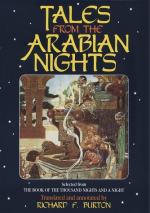I am of opinion that this Buddhist tale is the original form of the “Envious Sisters”— that it ended with the restoration of the children and the vindication of the innocence of their mother. The second part of our story has no necessary connection with the first, the elements of which it is composed being found in scores—nay, hundreds—of popular fictions in every country: the quest of wonderful or magical objects; one brother setting out, and by neglecting to follow the advice tendered him by some person he meets on his way, he comes to grief; a second brother follows, with the same result; and it is reserved for the youngest, and the least esteemed, to successfully accomplish the adventure. In the second part of the “Envious Sisters,” the girl, the youngest of the three children, plays the part of the usual hero of folk-tales of this class. There is, generally, a seemingly wretched old man—a hideous, misshapen dwarf—or an ugly, decrepit old woman—who is treated with rudeness by the two elder adventurers, so they do not speed in their enterprise; but the youngest addresses the person in respectful terms—shares his only loaf with him—and is rewarded by counsel which enables him to bring his adventure to a successful end. In the “Envious Sisters,” which I cannot but think Galland has garbled from his original, the eldest clips the beard of the hermit, and presumably the second does the same, since we are told he found the hermit in the like condition (albeit, his beard had been trimmed but a few days before). Each of them receives the same instructions. In a true folk-tale the two elder brothers would treat the old man with contempt and suffer accordingly, while the youngest would cut his nails and his beard, and make




